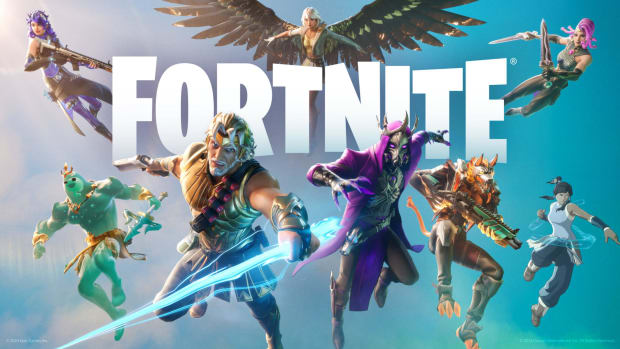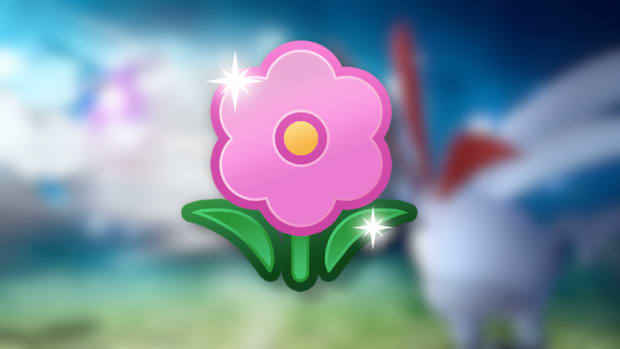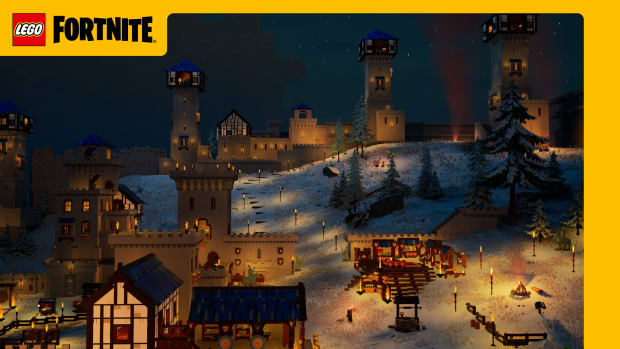Wild Hearts review: "New hotness"
I’ve often wondered why Monster Hunter isn’t basically a genre of its own. Monster Hunter World is the best-selling Capcom game of all time, and it seems likely that Monster Hunter Rise will cement a solid second-place finish after a recent launch on PlayStation and Xbox, with Sunbreak coming in the future. That means the potential audience could be as big as Pokémon, and just as that series spawned dozens of monster-collecting RPGs, Monster Hunter should’ve, by now, inspired a few more imitators.
There have been copycats, sure, but Wild Hearts is attempting something a bit different. Instead of starting off in a peaceful town and regularly getting sent off to kill or catch all manner of fierce beasts, you’re struggling for survival out in the wilds. Your home base is wherever you decide to settle down and build it thanks to the game’s Karakuri abilities, which allow you to spawn a variety of modern creations, from tents and bonfires to ziplines and springs that launch you into battle.
In order to build Karakuri you’ll need to collect materials from the world, called Thread, which can be extracted from rocks and trees in the environment. You’re pretty unlikely to run out of the materials for spawning Karakuri in battle, which is good, because you’ll need them.
The monsters, called Kemono, are the stars of the show of course. Massive, hulking beasts that can trash through your structures, fell trees, and destroy the environment. These monsters are fairly unique designs that combine the flora and fauna you might find deep in the wilderness. Monsters are imbued with plant elements, and may drip sap to slow you, or summon vines for attacks or new paths.
The Kemono in Wild Hearts are huge, to the point of being almost unwieldy. They can swallow up your camera perspective entirely, with attacks so massive that it might be a struggle to even figure out how you might get away. A swift sliding dodge can be performed out a sprint, and its huge range can get you out of harm’s way quickly, but it’s certainly not a guarantee.
Big monsters mean big attacks, and you’ll need more to defend against them than simply rolling away. Combine enough of your Karakuri springs, and they will combine to form a tough wall, which can stop large enemies in their tracks as they charge at you. Sliding, jumping, and creating barriers are all central mechanics in Wild Hearts that you’ll need to master to stand a chance against the toughest foes.
Kemono might sometimes be a bit too big, mind. The scale of the monsters is certainly impressive, but the huge hitboxes on their attacks and how they can blind the camera all work against you. Couple that with some potential framerate drops on PS5, and it feels too much like an uphill battle. Which is odd, because you’ll likely find most fights in Wild Hearts wrap up considerably faster than their equivalent would in a Monster Hunter game.
Like in Monster Hunter, Kemono can be toppled over for a chance to unleash your most powerful moves, and they can be intimidated into running away, at which point they may just lure you into an area they feel most comfortable, or most powerful. The enemies are tough, but your array of moves also feels much easier to access. Unleashing impressive and flashy attacks on a big monster isn’t too tough, you just need to find the moment where you’re safe enough to do so. Just tap the special button in your combo, and you’ll access new forms, attacks, and more – easier to get started with than Monster Hunter’s specific flowchart of combo paths and abilities, but perhaps less flexible over the course of a full game.
You can hunt Kemono with friends – having the constant pressure taken off of you can be a huge relief – and this is definitely the best way to play. Parties of three can take down foes together, and you’re able to freely join hunts for monsters you’ve already taken down, allowing you to grind for materials to get access to better weapons and armor. It’s a tried and true progression system for a game like this, and it works.
But the best marker for your progression is the world map. Wild Hearts feels like a more interesting single player experience than Monster Hunter. While there you’re funneled into a cycle of hunts that are best played with friends, in Wild Hearts you’ll slowly be moving across the world map, laying down campsites, and taking down the monsters that stand in your way. Once you’ve moved through several areas, it’ll feel like you’ve undergone a real journey, and that’s something Wild Hearts does better than its contemporaries, even if it does somewhat sideline the multiplayer experience.
Combat in Wild Hearts feels uniquely aggressive. Fights are much shorter than in Monster Hunter, but that’s both because of smaller Kemono health bars, and more aggressive Kemono overall. Instead of patiently waiting for the right moment to strike, in Wild Hearts you should be striking as often as possible. Unless toppled, foes won’t give you an obvious chance to move in and unleash your strongest attacks. So aggression is the name of the game on both sides. You need to keep dodging huge enemy attacks while also laying on the pressure as much as possible. This is easiest when deflecting enemy attacks.
Many monsters in Wild Hearts will charge at you, and you can use your Karakuri abilities to quickly build walls to stop and deflect their charge, which will topple monsters. Alternatively, some monsters will build and jump on podiums to attack from, and another Karakuri ability can be used to summon a hammer to smash down on top of them. Using the right Karakuri at the right time can sometimes be the only way to avoid a giant attack, and the time you get to counter them is just a bonus.
Attacks here are also sharper, faster, swifter. While each weapon has different forms, combo routes, and abilities, you can get pretty far just by tapping your attack buttons. The swift attacks complement the harsh enemy attack speed, allowing you to sneak pokes and jabs between attacks and big combos. It does a great job of feeling immediately satisfying.
Wild Hearts has a few issues, though. It likes to push players directly into big monster encounters without really preparing them on what that will play out like. Yes, you can move immediately onto the next main quest, but if you don’t slow down and harvest some earlier monsters for materials to upgrade your weapons and armor, you’re going to be in trouble. Performance is also a bit shaky on PC and PS5 alike – while you can expect to see 60fps most of the time, traveling with multiplayer partners and fighting Giant Kemono can see the framerate start to chug. It doesn’t impact playability, but it’s a visual distraction, for sure.
There’s also some weirdness with aliasing, as the faces of NPCs can look unusually blocky or blurry on a large screen. It appears to be a depth-of-field issue that is usually not noticeable, but in places it can be an unfortunate distraction that the game could do without.
It’s tough to reconcile both my enthusiasm and frustrations with Wild Hearts. I really enjoy the huge Kemono battles, but despite their brief length, my patience for them is also incredibly low. An enemy can kill you quickly early on in a fight, even if you’re adequately prepared. Strict i-frames on rolls and dodges make evading attacks difficult to time, and when stunned a kill can feel especially cheap and unfair in a way that Monster Hunter just doesn’t. It’s in these moments that simply turning off the game entirely feels like a better option than sprinting from my nearest campsite to continue the battle.
This sense of being demoralized feels partly down to the fact that it’s incredibly hard to judge how much of an impact you’re making on a monster. Many creatures will have a “second phase” which is visually impressive and makes clear that you’ve done a fair bit of damage, and then a final limping phase, but you’ll rarely see broken monster parts and wounds on the creature’s body. I’ve never felt the need for a health bar in Monster Hunter games, but here, with how brief the fights are anyway? It feels like it’d be a sensible choice.
As you can probably tell from the dozen mentions of Monster Hunter in this review, it’s tough to separate Wild Hearts from what it’s inspired by. These games both fit into their own niche genre of action game, and both excel at different things. But even through all my frustrations, and all the times I shut the game off after getting knocked down a single time, I still want to return to Wild Hearts with friends to get better gear and take down bigger Kemono – and that’s a good indicator that this game is doing something right.
Score: 8/10
Tested on PS5.








